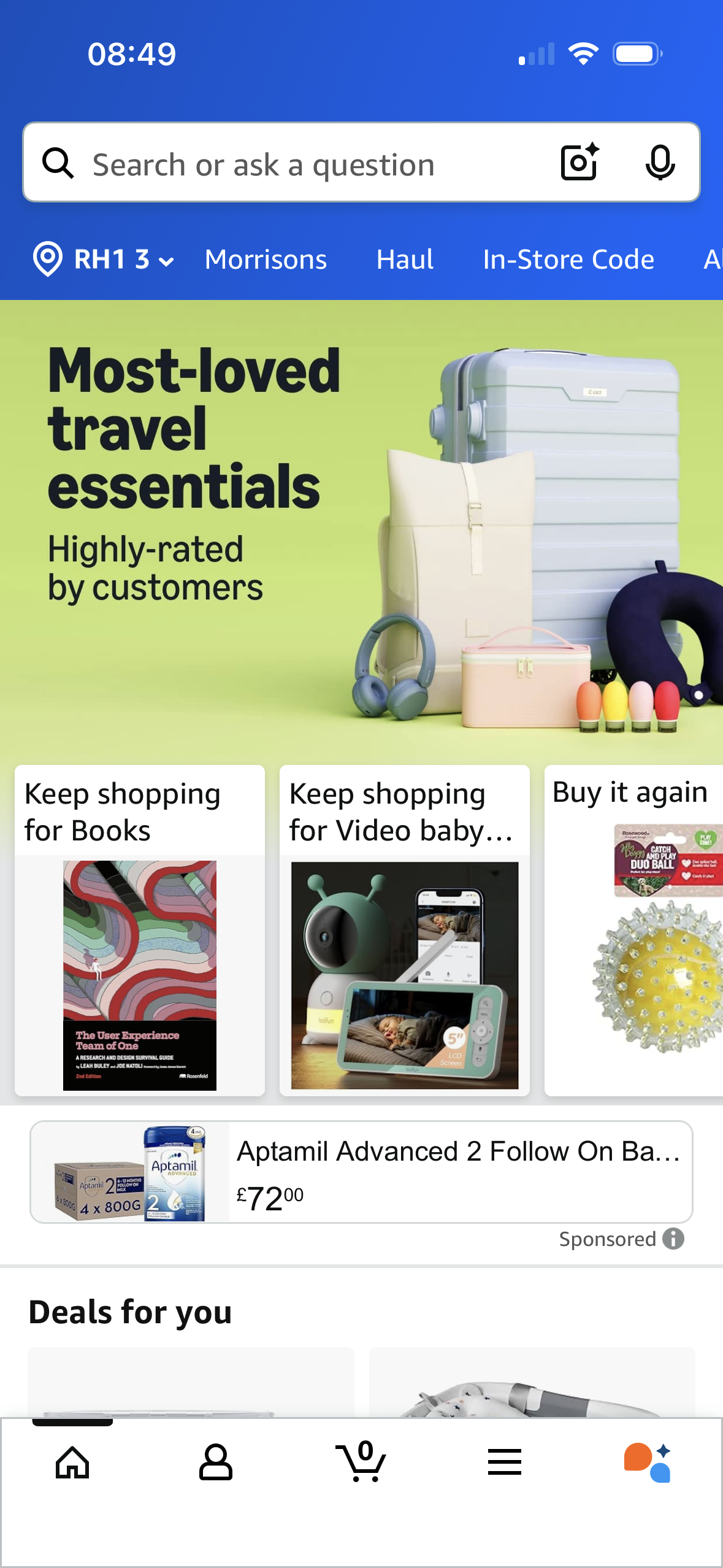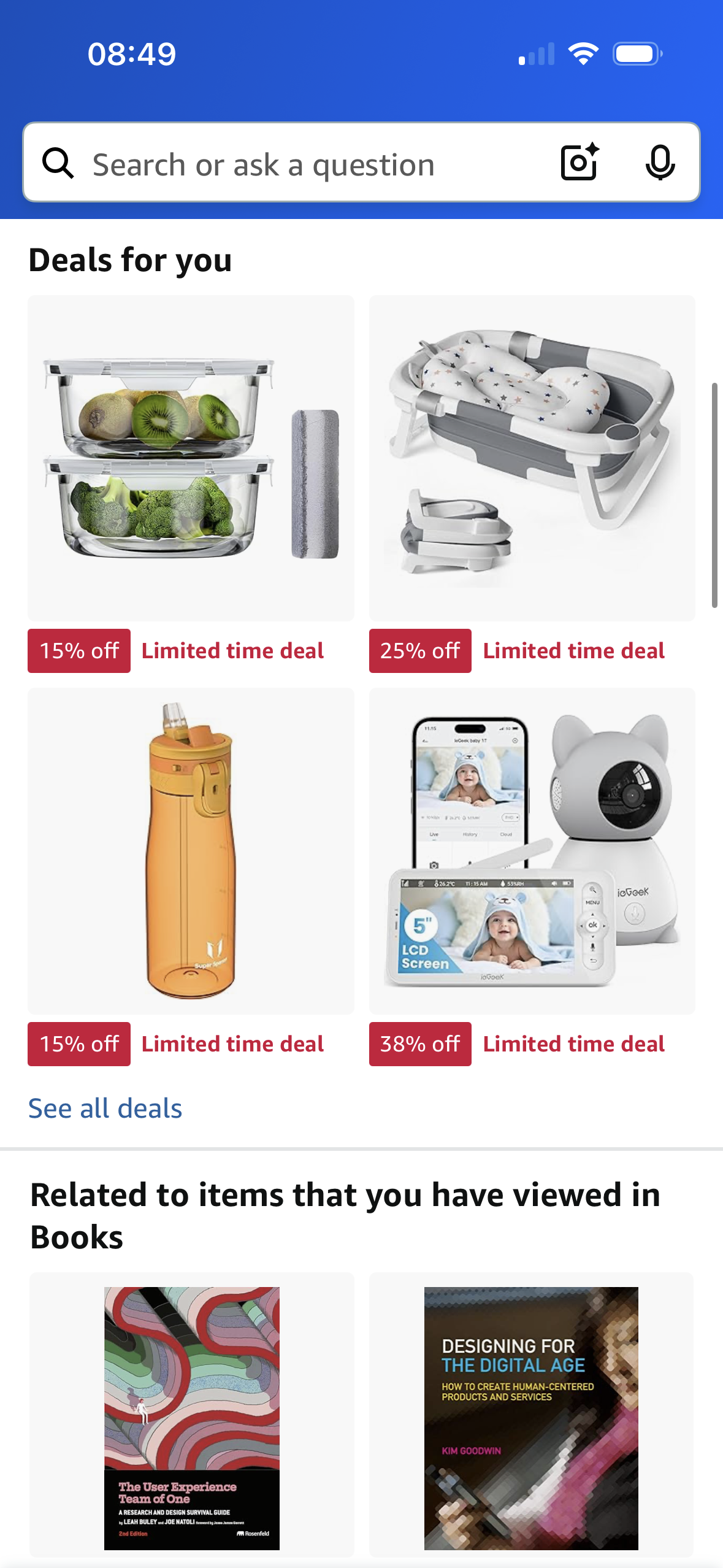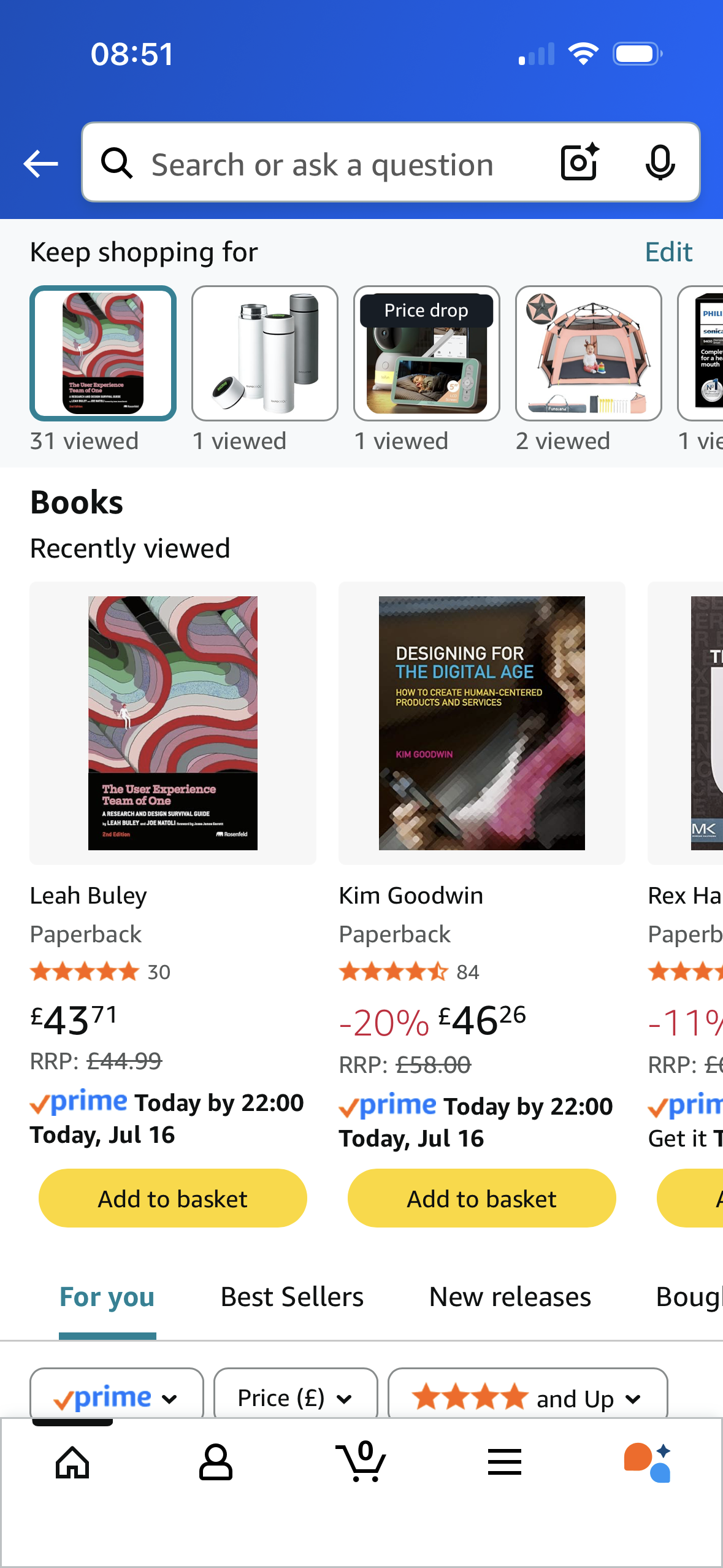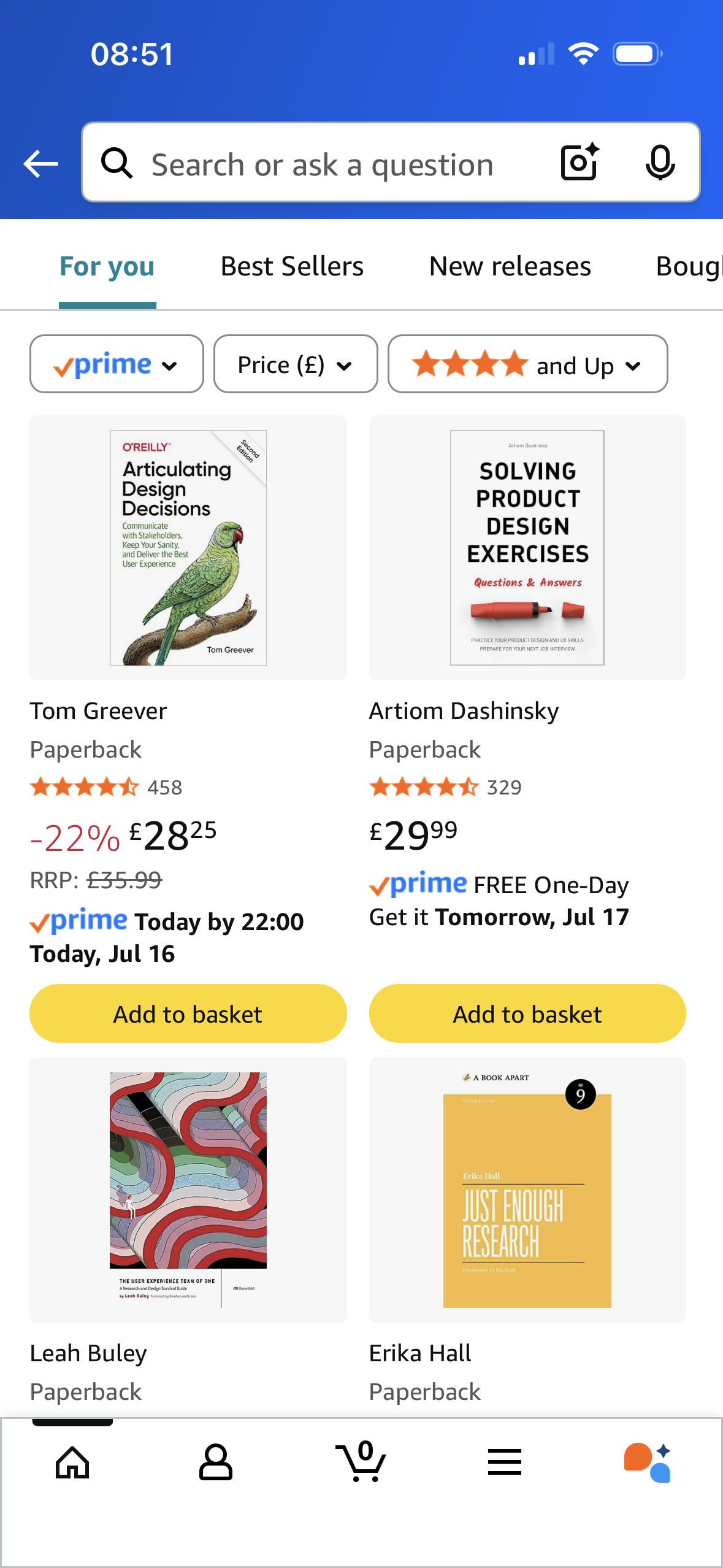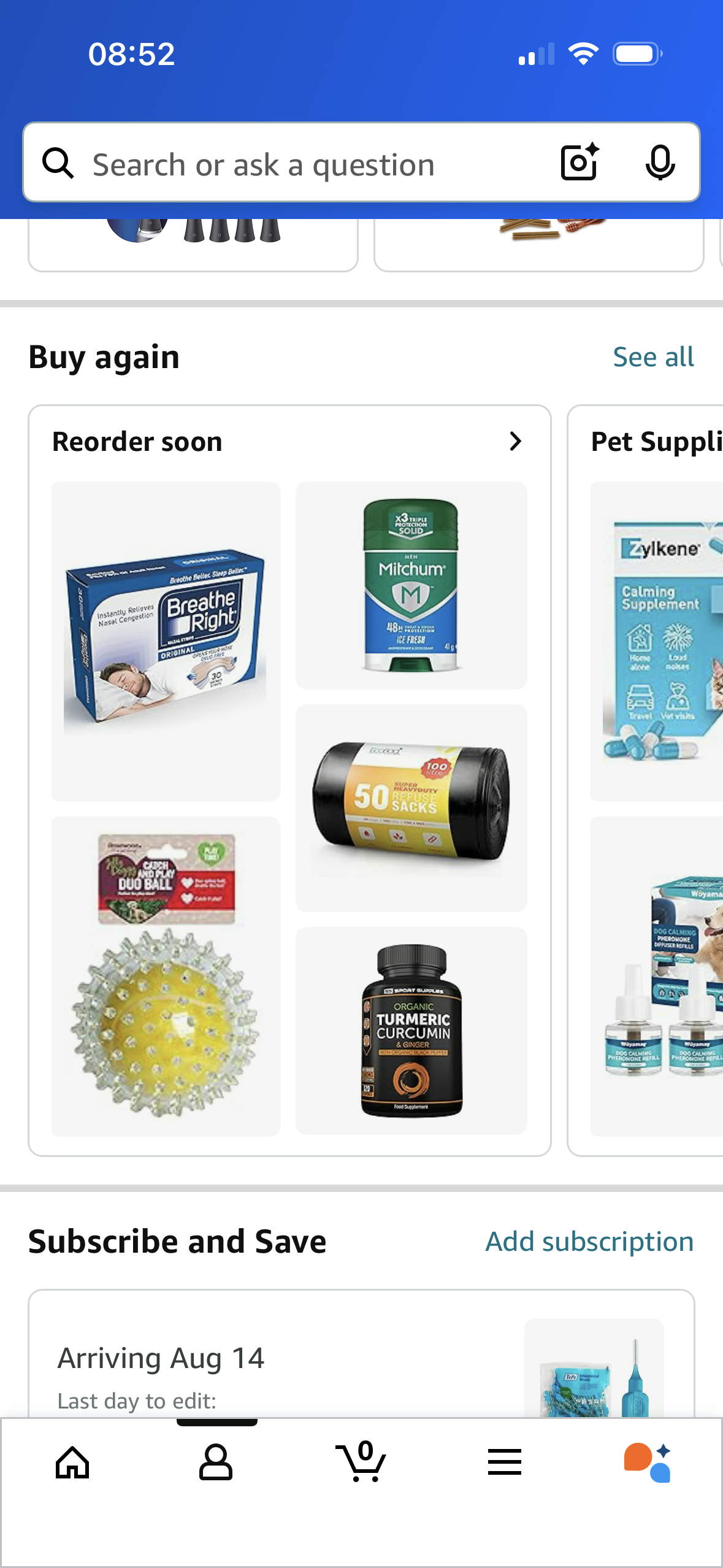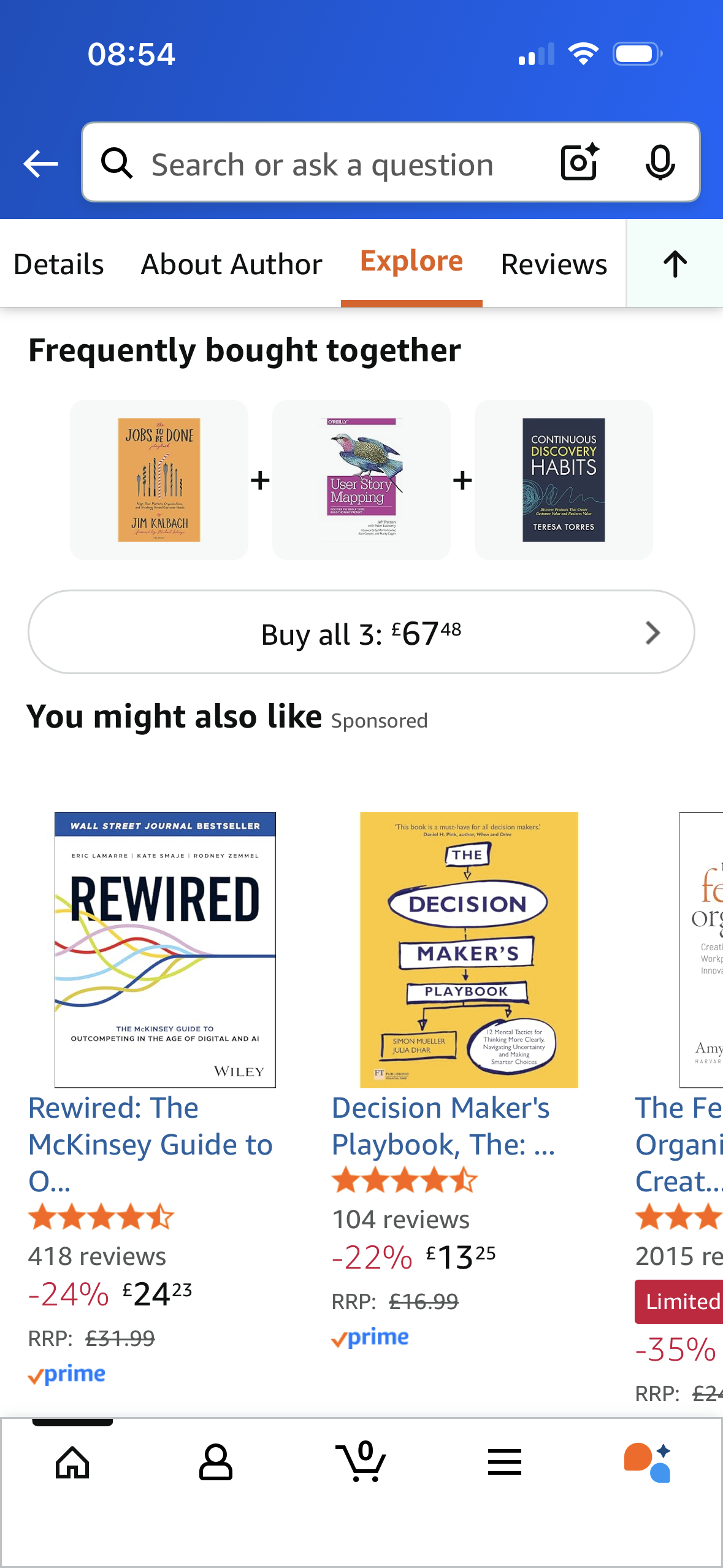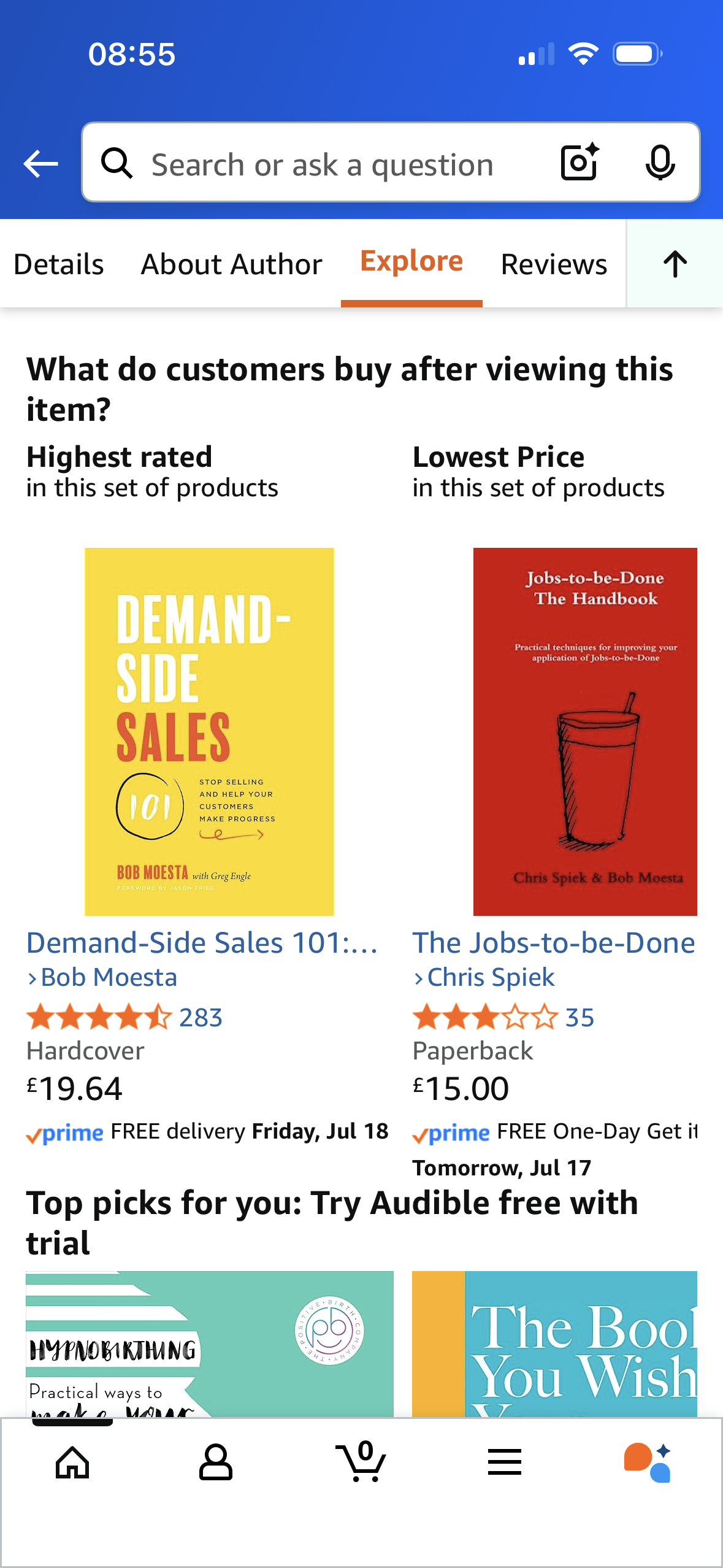
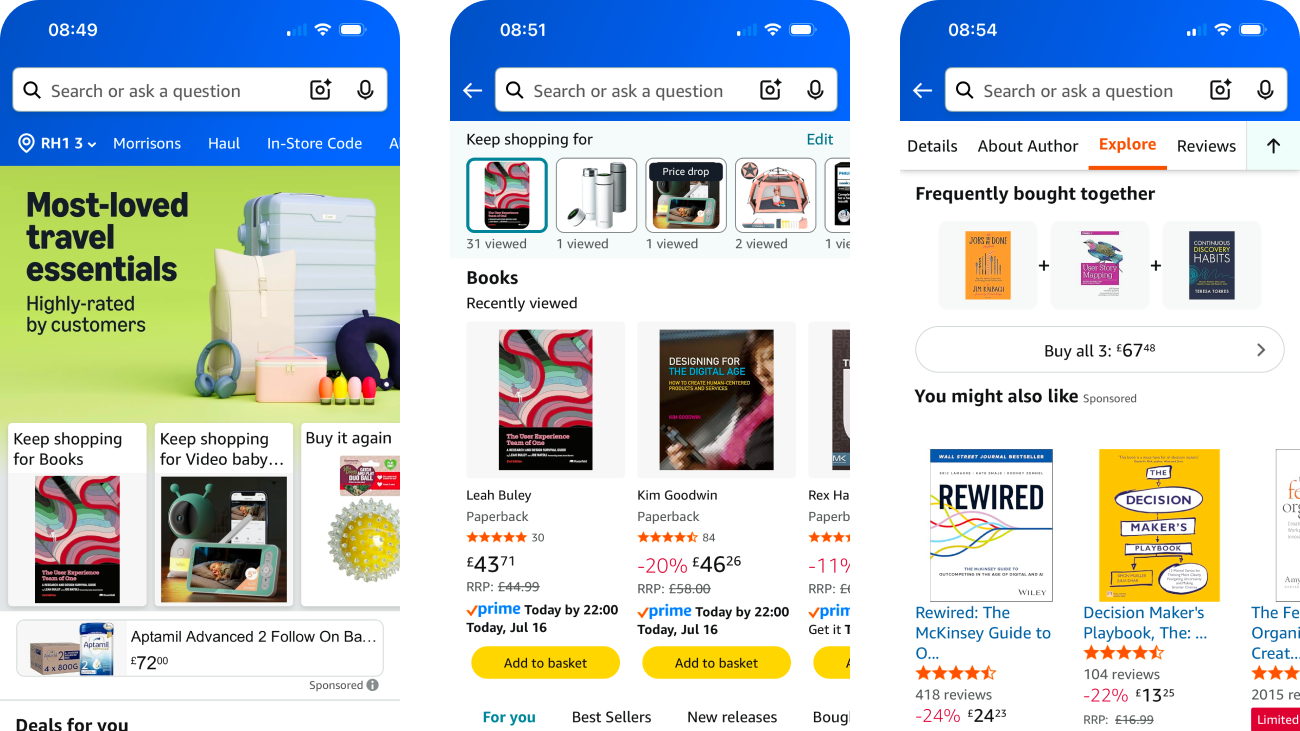
Amazon's product discovery experience is renowned for how many ways they target customers psychologically. From visually prominent urgency cues to default recurrence of past behaviours, the experience is heavily optimised to shift users from casual scrolls to considered actions.
Personalised content blocks and filtering mechanisms scaffold user motivation, but also introduce cognitive noise, especially when persuasive elements are overstacked without context.
